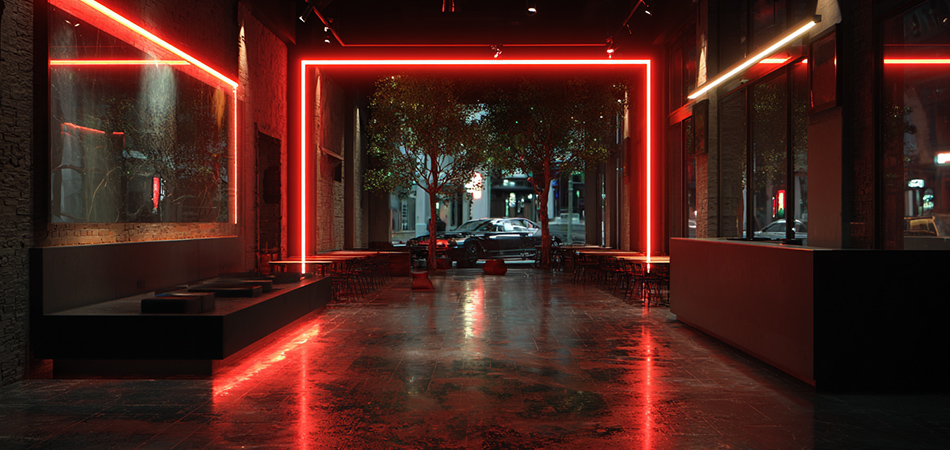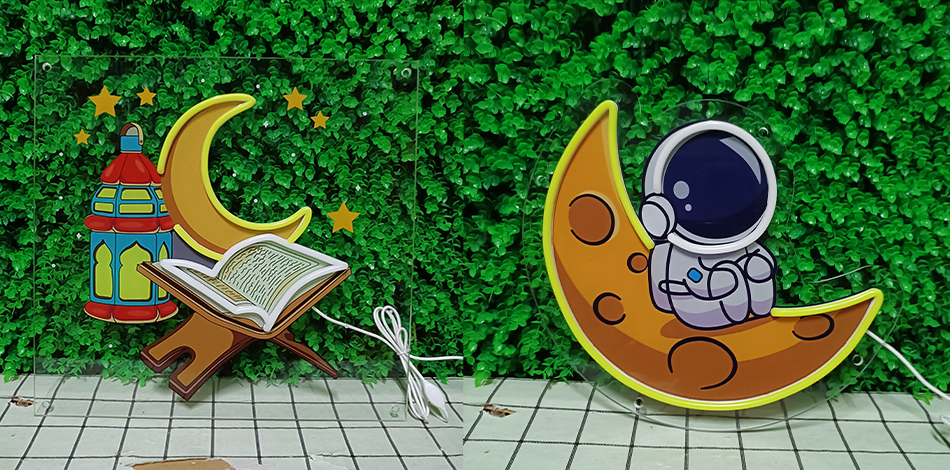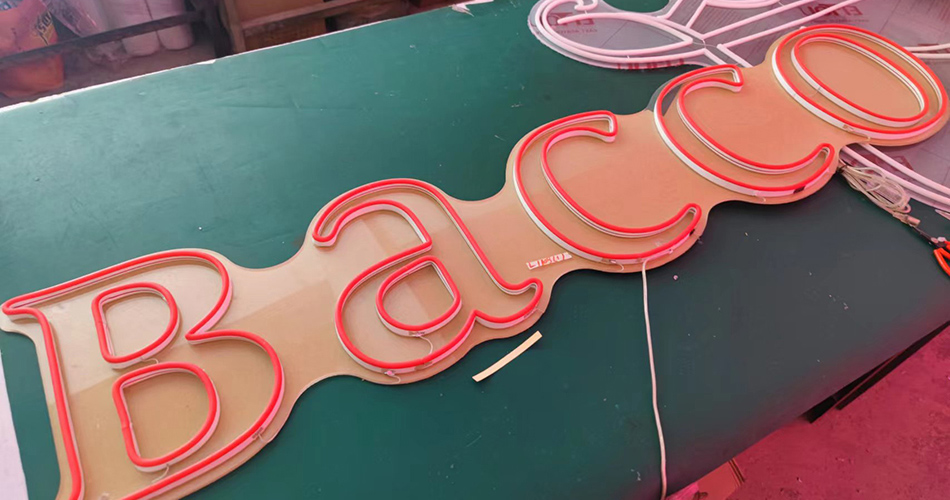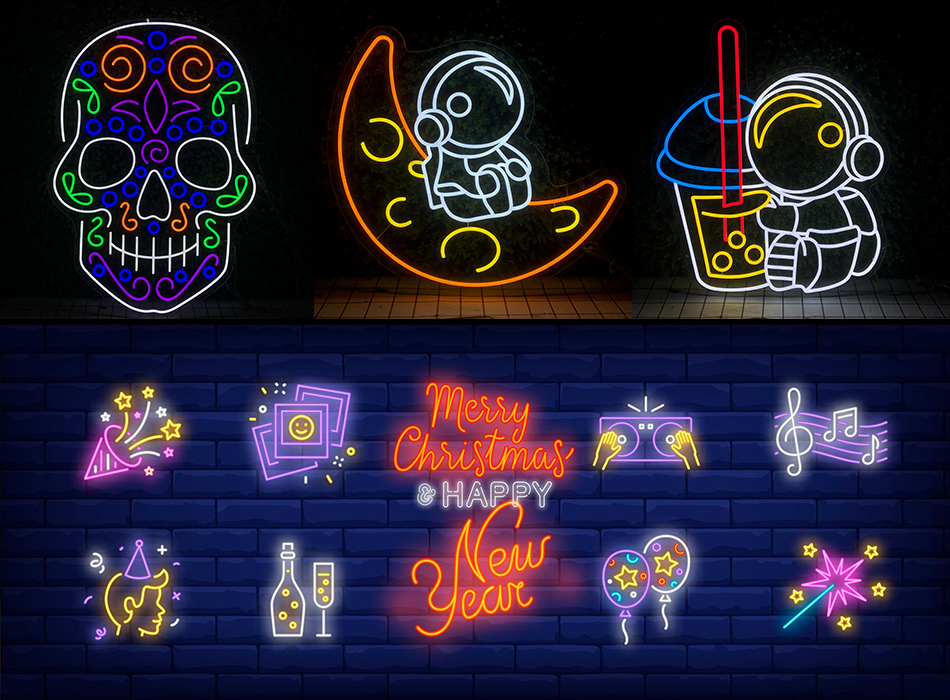Time:2025-07-05
The Transformative Role of LED Neon Signs in Contemporary Signage
In an age where visual communication demands both impact and adaptability, LED neon signs have emerged as the gold standard for modern branding and design. Combining the iconic glow of traditional neon with cutting-edge LED technology, these signs offer unparalleled flexibility, energy efficiency, and creative freedom. From bustling urban storefronts to sophisticated residential interiors, LED neon signs have redefined how businesses and individuals convey their identity, creating immersive experiences that blend nostalgia with innovation. As industries increasingly prioritize sustainability and digital integration, LED neon signs stand out as a future-proof solution that marries aesthetic appeal with functional excellence.

Technical Superiority: LED Neon vs. Traditional Neon
The evolution from traditional neon to LED neon represents a leap in technological advancement:
Energy Efficiency: LED neon systems operate at low voltage, consuming up to 80% less energy than traditional neon, making them ideal for 24/7 operations. This efficiency not only reduces carbon footprints but also lowers long-term operational costs.
Durability and Safety: Unlike fragile glass neon tubes, LED neon uses flexible silicone or PVC sheaths that are shatterproof, weather-resistant, and free of hazardous gases like mercury. This makes them suitable for high-traffic areas, outdoor installations, and residential environments with children or pets.
Color and Lighting Versatility: RGB (Red-Green-Blue) LED chips enable millions of color combinations, from vibrant primaries to subtle pastels, with the ability to create smooth gradients, dynamic fades, and synchronized lighting effects. Advanced systems even support music-responsive patterns or real-time color adjustments via mobile apps.

Design Flexibility: Crafting Unique Visual Narratives
LED neon signs thrive on design versatility, allowing for endless creative possibilities:
Typography and Structure: From sleek sans-serif fonts for modern brands to ornate script styles for luxury venues, LED neon can be shaped into any letterform, logo, or abstract design. 3D layered constructions add depth, with floating mounts or backlit panels creating dramatic shadows and dimension.
Customization at Scale: Modular designs enable easy scaling for both small decorative pieces (e.g., a nursery name sign) and large commercial installations (e.g., a stadium-sized brand logo). Manufacturers use precision bending machines to achieve intricate curves and angles, ensuring consistency across multiple locations.
Material Integration: Backing panels made from acrylic, metal, or reclaimed wood complement the neon tubing, while frosted diffusers soften the light for a muted, elegant glow. Transparent backings allow for “invisible” mounting, creating the illusion of floating letters.

Diverse Applications Across Industries
LED neon signs have become indispensable across a range of sectors:
Retail and Hospitality: Stores use LED neon to highlight promotions, brand logos, or thematic displays, with dynamic color changes to match seasonal campaigns. Cafés and bars employ them to craft inviting atmospheres, such as warm amber hues for intimate dining or vibrant blues for energetic nightlife venues.
Residential and Interior Design: Homeowners use LED neon to personalize spaces with motivational quotes, family names, or artistic murals. In home theaters or gaming rooms, reactive LED neon can sync with on-screen action, enhancing immersion.
Events and Experiential Marketing: Weddings and corporate events feature LED neon backdrops with event hashtags or custom designs, while trade shows use portable, lightweight neon signs to attract foot traffic and create memorable booths.
Architectural and Public Spaces: Museums and galleries integrate LED neon into exhibits for thematic lighting, while urban installations use large-scale neon art to transform public areas into interactive cultural hubs.

Installation and Maintenance: Simplified for Modern Needs
Installing LED neon signs is a streamlined process designed for efficiency:
Plug-and-Play Setup: Lightweight designs and pre-wired components allow for easy wall mounting, ceiling suspension, or window placement, often without professional assistance. Outdoor installations feature IP65-rated waterproofing for protection against rain and dust.
Smart Control Integration: Most systems include Bluetooth or Wi-Fi connectivity, enabling users to manage lighting effects, schedules, and brightness levels via dedicated apps. This is particularly useful for businesses that need to update displays remotely or sync signs with other smart devices.
Low Maintenance Requirements: LED neon systems have a lifespan of 50,000+ hours, with minimal upkeep beyond occasional cleaning with a soft cloth. Modular designs allow for easy replacement of individual LED strips if needed, reducing downtime and repair costs.
Economic and Environmental Benefits
The advantages of LED neon signs extend beyond aesthetics:
Cost-Effective Longevity: While the initial investment may be higher than traditional signage, the combination of energy savings, low maintenance, and durability provides a strong return on investment (ROI), especially for businesses with long operational hours.
Sustainability Credentials: LED neon aligns with global eco-goals by eliminating hazardous materials and reducing energy consumption. Many manufacturers now use recycled aluminum frames and eco-friendly silicone sheaths, further minimizing environmental impact.
Branding ROI: The eye-catching nature of LED neon increases foot traffic and social media engagement, with users frequently sharing photos of vibrant installations, providing organic marketing value for businesses.
Innovations Shaping the Future of LED Neon
The field is driven by continuous innovation:
AI and IoT Integration: Advanced systems use artificial intelligence to analyze foot traffic or weather data and auto-adjust lighting effects. For example, a retail store might dim signs during low traffic periods or intensify colors during peak hours.
Augmented Reality (AR) Experiences: Some LED neon signs include AR markers that, when scanned, unlock digital content like product information or 3D animations, bridging the gap between physical and digital marketing.
Solar-Powered Solutions: Solar panels integrated into LED neon systems enable off-grid operation, ideal for outdoor events, remote locations, or businesses seeking zero-carbon signage.
Bio-Based Materials: Experimental designs use plant-based polymers for sheaths and recycled electronics for components, pushing the boundaries of sustainable signage.
Selecting the Right LED Neon Sign Provider
Choosing a provider requires evaluating expertise and alignment with project goals:
Technical Proficiency: Look for suppliers with certifications in LED technology (e.g., UL, CE) and a portfolio demonstrating complex designs, such as curved logos or multi-color gradients.
Design Collaboration: Top providers offer end-to-end design services, from 3D modeling to material sampling, ensuring the final product matches brand guidelines. Custom font creation and logo replication are key indicators of flexibility.
Support and Warranty: Prioritize suppliers offering comprehensive warranties (3–5 years for components) and post-installation support, including remote diagnostics and replacement services.
Sustainability Commitment: Eco-conscious brands should seek providers using recycled materials, energy-efficient production processes, and responsible waste management practices.
LED neon signs have transcended mere signage to become dynamic tools for storytelling, branding, and environmental stewardship. As technology continues to evolve, their ability to adapt to changing trends—from smart cities to sustainable design—will solidify their place as a cornerstone of modern visual communication. For businesses and designers alike, investing in LED neon signs means embracing a future where light is not just a utility but a transformative force that connects, engages, and inspires.